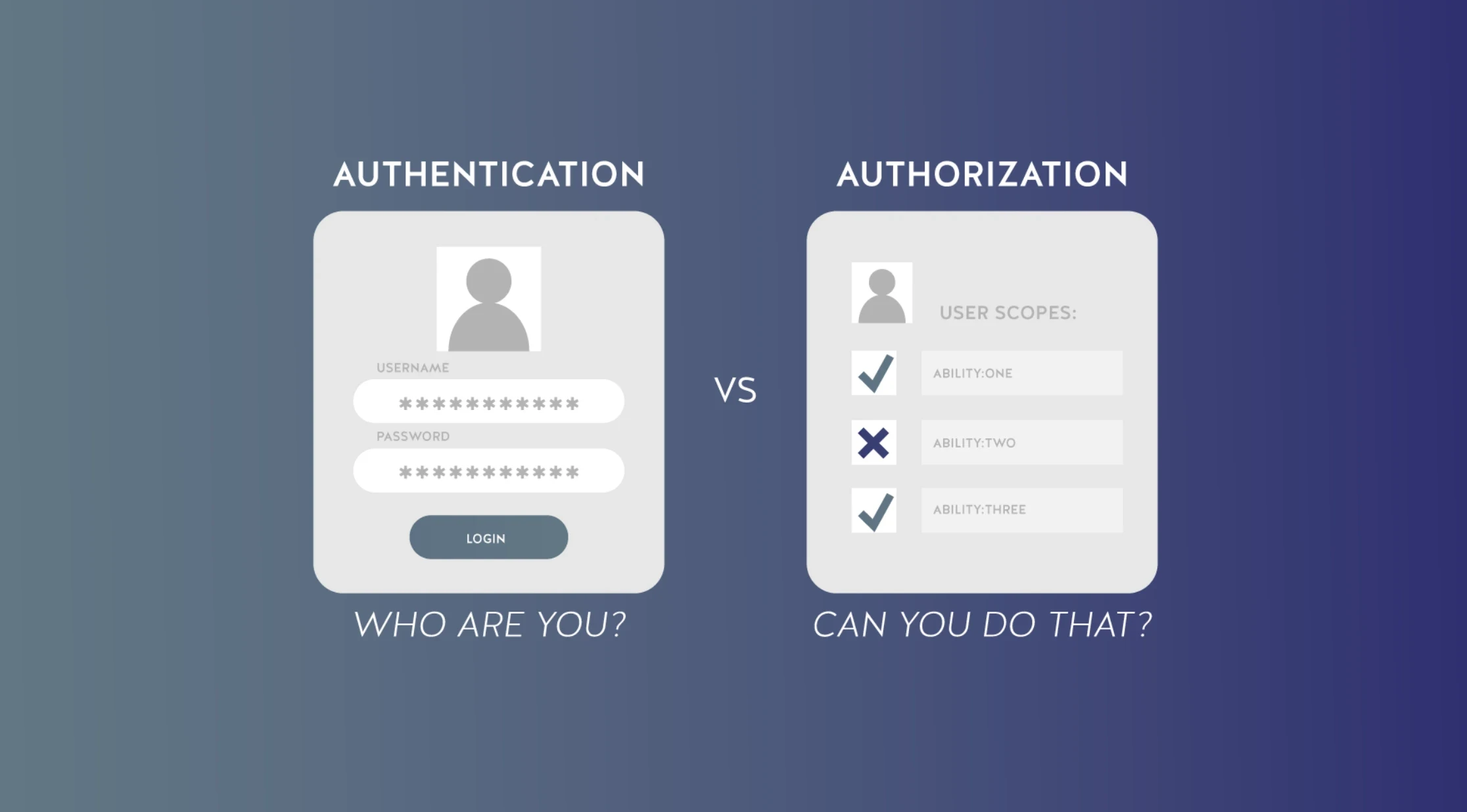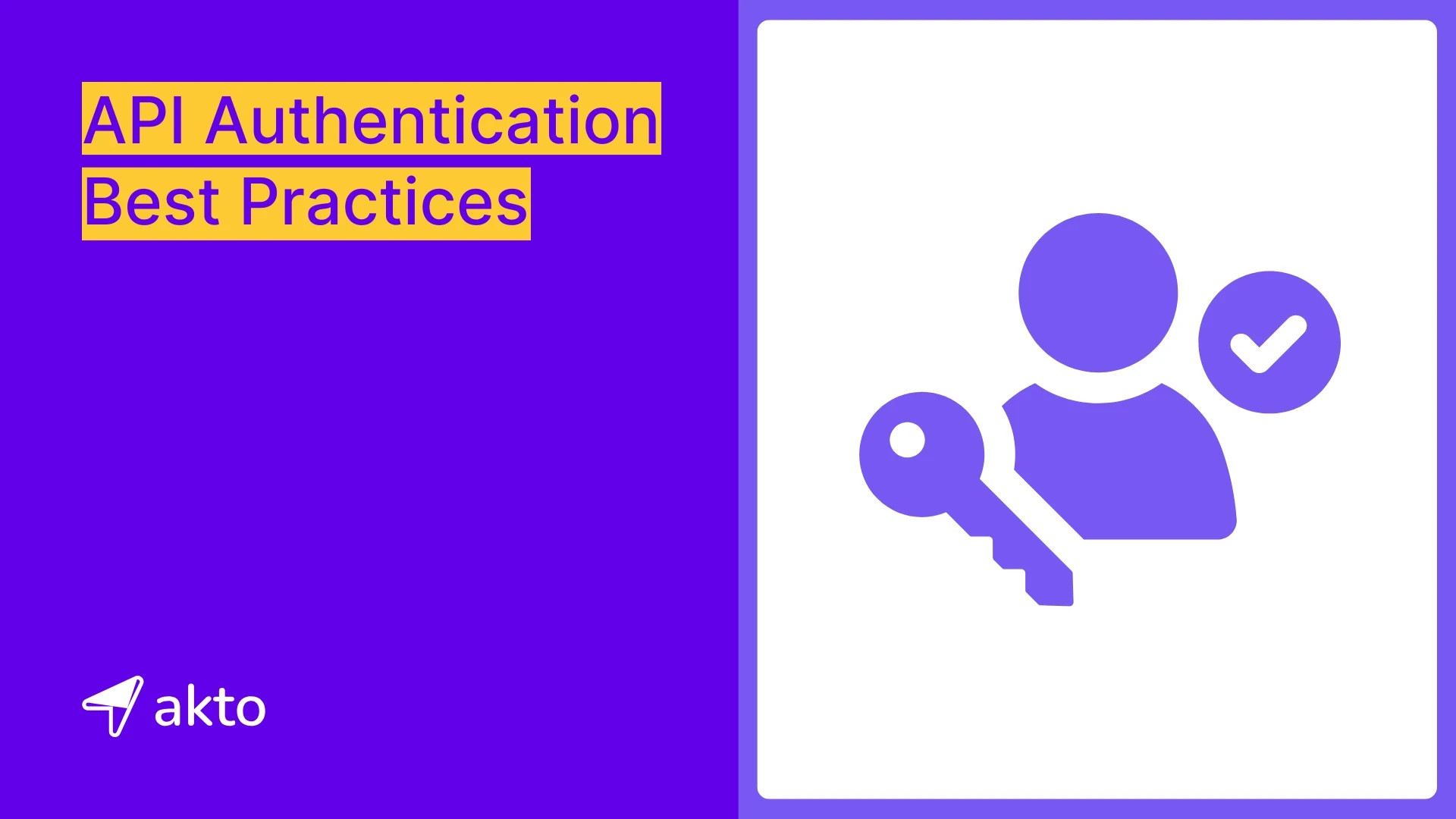API authentication confirms the user's or application's identity before allowing access to an API. It only allows authorized clients to interact with the API, enhancing security and preventing unauthorized access.
API authentication enhances security through the prevention of breaches, protection of sensitive data, and access controls. It increases the trust of the user, reduces fraud, and allows controlled API usage through automatic verification.
This blog explores API authentication, the importance of security in digital interactions, best practices in the implementation of strong authentication mechanisms, and the difference between authentication and authorization.
Let's get started!
What is API Authentication?
API authentication is the procedure of authenticating the identity of a user when an API call is made. Every API authentication technique, such as OAuth, JWT, API key authentication, and HTTP basic authentication, has advantages and disadvantages associated with certain use cases. Nevertheless, protecting sensitive information and ensuring the API is not abused are the goals of any API authentication system.
Importance of API Authentication
Organizations are using APIs to enhance functionality and promote growth. Further, increasingly more developers are employing an API-first strategy where they build applications as a set of services delivered through APIs.
This prioritizes security and performance, guaranteeing that APIs can scale without exposing vulnerabilities. It relies heavily on API authentication to authenticate user identities, prevent illegal access, and secure sensitive data.
API authentication improves security by limiting access control, maintaining data integrity, and reducing fraud. It improves audibility, simplifies compliance with security requirements, and protects an organization’s reputation by reducing cybersecurity threats.
Strong authentication procedures, such as identity verification and enforcing access control, help prevent data breaches and unauthorized modifications. Organizations can maintain trust, guarantee regulatory compliance, and safeguard the digital assets by incorporating authentication into API security frameworks.
API Authentication Best Practices
API authentication is important for protecting sensitive data and preventing unauthorized API access. Here are some of the best practices to enhance API authentication:
Use Strong Authentication Methods
Authentication is the backbone of API security, and using strong methods of authentication is required to protect sensitive data. The most widely accepted protocol to offer protected authorization and delegated access is OAuth 2.0, which allows granting third-party application access without needing to expose the credentials themselves.
OpenID Connect is built upon OAuth 2.0 and adds an identity layer to the authentication, which makes it quite useful for SSO implementations. Further, JSON Web Tokens (JWT) offer a secure way for transmitting information between parties compactly and self-contained that is suitable for stateless authentication.
Implement Rate Limiting
Rate limiting is an important mechanism to control the amount of requests a user or application can make within a given timeframe. The API providers will set the request limits so that excessive usage does not degrade performance or even halt the service.
Rate limiting provides protection against brute-force attacks as well as other misuse where attackers would not spam the API with many unauthorized repeated attempts. Moreover, it ensures fair usage since each user is able to access the API resources equally to avoid having one entity monopolize the bandwidth.
Secure API Keys
API keys form a common scheme of authentication that needs to have security to prohibit unauthorized access; encryption of key during transmission as well as at the time of storage reduces vulnerabilities. Keys cannot be hardcoded to application code as they should have secure storage locations in environment variables or configuration files.
Regular rotation of keys is another best practice that ensures compromised keys are made useless since users can generate new keys periodically. These ensure API security while allowing eligible users to have full access with no interruptions.
Utilize HTTPS
HTTPS is a fundamental requirement for the secure transmission of data between clients and APIs. Encryption in transit ensures that any sensitive information transmitted from the client will not be intercepted or suffer a man-in-the-middle attack.
SSL/TLS certificates also must be regularly checked and updated in order to avoid vulnerabilities that would be left if the encryption techniques were outdated; thus, with HTTPS, becoming the standard use for all APIs, it solidifies a very secure basis upon which authentication as well as exchanging data is created.
Validate Input Data
Proper input validation is the best defense against injection attacks and data corruption. Sanitizing input removes or neutralizes potentially harmful characters, so the likelihood of a security breach being executed significantly decreases.
In addition, simple checks on type and length ensure incoming data fits an expected format, which blocks malicious payloads from being processed by the API. Validation of all input data can help API providers significantly reduce vulnerabilities that attackers might exploit.
Employ Robust Access Control
Fine-grained access control mechanisms are implemented based on roles and responsibilities to constrain user permissions. Role-Based Access Control (RBAC) grants users only that level of resource access required for their tasks so that the scope of unauthorized activity is minimized.
The principle of least privilege takes it to the next level by ensuring access is granted at the minimum degree possible. This can thereby serve to reduce the attack surface to the smallest possible and avoid attacks that could eventually breach the system through privilege escalation.
Regularly Rotate Credentials
Frequent credential rotation is an example of proactive security, which minimizes risk due to compromised authentication credentials. Constantly setting scheduled updates for API keys, passwords, and other access credentials means that outdated or exposed credentials cannot have a long time security implication.
Moreover, the implementation of automated alerts reminds users that it is time to rotate their credentials on schedule, ensuring that there are good posture requirements without API interruption or temporal shift.
Monitor and Log Access
Strongly monitoring and logging API activities ensure that early insights into threats become possible. This real-time monitoring allows the APIs to know suspicious access patterns from the providers in case of any unauthorized usage or attacks.
Detail audit trails must be kept up for the audit of security compliance and forensic investigation in case of a security breach. Continuous monitoring of API interactions could improve an organization's capability to respond quickly against potential threats.
Implement Token Expiration
Setting token expiration limits is another major preventive measure against unauthorized access risk. Short-lived tokens minimize the effects of stolen credentials because they cannot be used for more than a short period.
Authentication vs Authorization
Authentication and authorization are two interrelated but independent processes that guarantee the security of access to a system and resources. Authentication involves authenticating the identity of a user, thereby establishing that the person is who they say they are.

Image Source: https://www.mobile-mentor.com/wp-content/uploads/2023/05/What-is-the-Difference-Between-Authorization-and-Authentication.png
Authorization identifies what resources or actions a user is allowed to access within a system. By definition, access rights are always granted after the identity of the user has been confirmed.
Key Differences
Category Authentication Authorization Purpose Verifies the identity of the user Determines what resource a user can access Process Validates credentials (passwords, biometrics, etc.) Enforces access policies and rules Timing Occurs before authorization Occurs after successful authentication Information Uses an ID Token for identity transmission Uses an Access Token for permission control Governance Governed by various protocols including OpenID Connect (OIDC) protocol Governed by OAuth 2.0 framework Visibility Visible and modifiable by the user Not visible or changeable by the user Techniques Passwords, OTPs, biometric data Role-based access control (RBAC), OAuth 2.0
Final Thoughts
Strong API authentication procedures are critical for securing digital interactions, safeguarding sensitive data, and preventing illegal access. As cyber threats grow, organizations must implement comprehensive security solutions to protect their APIs from new vulnerabilities.
Akto provides a robust API security platform that continuously monitors and tests APIs for authentication flaws and other security risks. With its automated business logic testing, smooth integration with various traffic sources, and protection against the OWASP Top 10 vulnerabilities, Akto enables enterprises to proactively improve the security of their APIs.
To see Akto's robust API Security capabilities in action, schedule a demo and adopt a proactive approach to API security.
Want to learn more?
Subscribe to Akto's educational emails for essential insights on protecting your API ecosystem.

